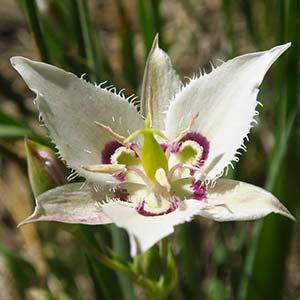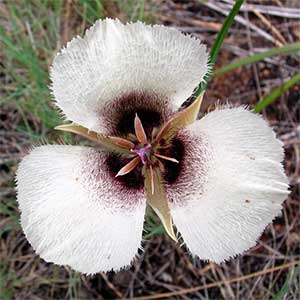Calochortus lyallii
Calochortus umpquaensis
Umpqua mariposa lily
20–30 cm long, usually not branching.
basal leaves narrowly lanceolate; to 40 cm long;
upper surface pubescent;
cauline leaf 1, not prominent.
1–5-flowered;
bracts 2, subopposite, narrowly lanceolate.
sepals lanceolate-acuminate; to 20 mm long;
petals to 40 mm long, white to cream-colored, with dark purple crescent above nectary;
inner surface hairy throughout or sparsely hairy;
upper inner surface minutely papillose or not;
filaments 7 mm long;
anthers to 7 mm long.
nodding, 3–5.5 cm long.
irregular-shaped, yellow.
=20.
Calochortus lyallii
Calochortus umpquaensis
Southwestern Oregon. 3 subspecies.
Similar to C. howellii, this species is also a southwestern Oregon endemic found on serpentine soils. They differ in that C. umpquaensis has nodding fruits and petals up to 40 mm long, whereas C. howellii has erect fruits and shorter petals, to 25 mm long.
Frank Callahan




